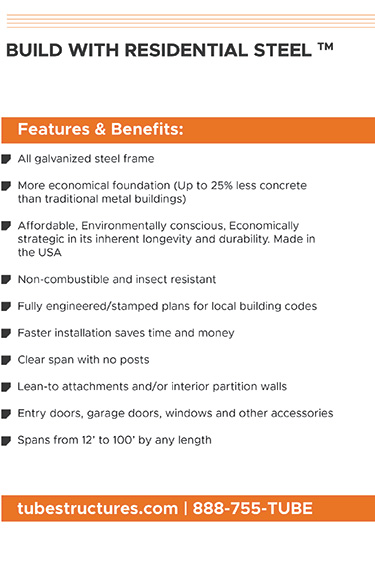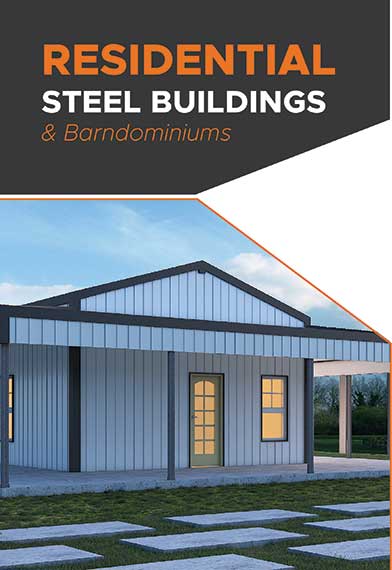April Construction Starts Retreat 15 Percent
- January 5, 2021
- Posted by: Alan Hageman
- Category: News

The value of new construction starts in April fell 15 percent to a seasonally adjusted annual rate of $685.2 billion, pulling back following the 16 percent hike that was reported in March, according to Dodge Data & Analytics. Steep declines were registered by two of the three main construction sectors. Nonbuilding construction, which is comprised of public works and electric utilities/gas plants, plunged 31 percent from its elevated March amount which was lifted by the start of the $4.3 billion Calcasieu Pass liquefied natural gas (LNG) export terminal in Cameron, La. Nonresidential building fell 18 percent in April after being boosted in March by groundbreaking for the $1.6 billion Toyota-Mazda automotive manufacturing facility in Huntsville, Ala., among other large projects. Nonresidential building in April did receive support from the start of the $1.3 billion new airport terminal project at Kansas City International Airport. Meanwhile, residential building in April decreased 1 percent, as a modest rebound for multifamily housing was outweighed by further slippage for single-family housing. During the first four months of 2019, total construction starts on an unadjusted basis were $224.5 billion, down 8 percent from the same period of 2018. On a 12-month moving total basis, total construction starts for the 12 months ending April 2019 held steady with the corresponding amount for the 12 months ending April 2018.
April’s data lowered the Dodge Index to 145 (2000=100), down from 171 in March. Taking the average for March and April produces an Index reading of 158, which is above the 150 average for January and February, yet still below the 171 average for all of 2018.
“The construction start statistics can be volatile on a month-to-month basis, and that’s certainly been true in March and April, as a 16 percent jump was followed by a 15 percent decline,” stated Robert A. Murray, chief economist for Dodge Data & Analytics. “Much of the volatility can be attributed to the presence or absence of large projects – in March there were ten projects valued each at $500 million or more that reached groundbreaking, while April saw only two such projects. Amidst this volatility, there are several trends about 2019 construction activity that are beginning to emerge. Overall construction activity continues to show deceleration around an up-and-down monthly pattern, with a varied performance by major construction sector. The public works side of nonbuilding construction got off to a slow start in 2019, which at least through March was partially offset by an upturn for electric utilities/gas plants. Some improvement for public works is expected as the current year proceeds, given the fiscal 2019 federal funding approved back in February as well as the continued support of state construction bond measures. Nonresidential building is staying close to its pace of last year, helped by continued strength for office buildings, hotels, educational facilities, and transportation terminals. The multifamily side of residential building is retreating, even with the occasional monthly upturn, while single family housing has not yet provided evidence that it can rebound from the slower pace that took hold towards the end of last year.”
Nonbuilding construction in April plunged 31 percent to $147.2 billion (annual rate), which followed a 40 percent surge in March. The $4.3 billion LNG export terminal in Louisiana that was included as a March start caused much of this volatility – if this project is excluded, the decline for nonbuilding construction in April would have been a more moderate 9 percent following a 7 percent increase in March. The electric utility/gas plant category plummeted 87 percent in April, reflecting both weak activity for the month and the comparison to March that included the $4.3 billion LNG export terminal. The public works categories as a group dropped 5 percent in April, slowing after a 21 percent increase in March. The miscellaneous public works category (which includes site work, rail transit, and pipelines) fell 29 percent, although April did include the start of a $307 million rail transit extension at Hartsfield-Jackson International Airport in Atlanta, and a $290 million riverfront revitalization project in Omaha, Neb. Declines were also reported in April for water supply construction, down 17 percent; and river/harbor development, down 40 percent. On the plus side for public works, sewer construction in April climbed 88 percent, led by a $631 million water pollution control effluent tunnel in Carson, Calif., and a $412 million sewer project in Redwood City, Calif. Highway and bridge construction in April edged up 1 percent, rising for the second month a row after declines in January and February. Supporting April’s improved highway and bridge amount was $253 million for the start of renovation work on the Throgs Neck Bridge in the Bronx, N.Y. The top five states for highway and bridge construction starts in April, ranked by dollar volume, were – California, Texas, Florida, New York, and Ohio.
Nonresidential building in April dropped 18% to $248.5 billion (annual rate), which followed a 24 percent increase in March. The manufacturing plant category fell 72 percent in April after soaring 90 percent in March that included the $1.6 billion Toyota-Mazda automotive manufacturing plant in Alabama. By contrast, the largest manufacturing plant project that reached groundbreaking in April was a $250 million paper mill in Green Bay, Wis. The institutional side of nonresidential building decreased 9 percent in April, which reflected a mixed pattern by project type. The amusement-related category fell 50 percent after being boosted in March by the $850 million renovation of the KeyArena in Seattle. Healthcare facilities fell 29 percent in April following growth during the previous two months, while the public buildings category (courthouses and detention facilities) dropped 22 percent. On the plus side, the transportation terminal category soared 159 percent in April, lifted by the $972 million terminal building portion of the $1.3 billion new airport terminal project at Kansas City International Airport. Educational facilities grew 6 percent in April, registering improvement for the second month in a row after a lackluster performance in January and February. Large high school projects that reached groundbreaking in April were located in Fall River, Mass., ($215 million), Upper Arlington, Ohio, ($140 million), and Santa Monica, Calif., ($98 million). The top five states for K-12 school construction starts in April, ranked by dollar volume, were – Texas, Ohio, California, Washington, and Massachusetts.
The commercial building categories as a group fell 16 percent in April, after a 22 percent rise in March. Hotel construction dropped 51 percent from its March amount, which featured the start of the $850 million hotel portion of a $1.1 billion hotel and theater redevelopment project located in Times Square New York City. The largest hotel project that reached groundbreaking in April was a $229 million Embassy Suites hotel in Nashville, Tenn. Office construction in April retreated 9% from its March amount, which included such projects as a $750 million Facebook data center in Sandston, Va., the $550 million Norfolk Southern headquarters building in Atlanta, and a $300 million CloudHQ data center in Ashburn, Va. In April, new data center projects continued at a brisk pace, with six projects valued each at $100 million or more reaching groundbreaking, led by a $315 million Facebook data center in New Albany OH. Other noteworthy office projects in April were a $300 million upgrade to the One Post Office Square Tower in Boston MA, a $170 million office building in Chicago IL, and two Charles Schwab office buildings in Westlake, Texas, valued at $84 million and $81 million respectively. The top five metropolitan areas for office construction starts in April, ranked by dollar volume, were – Dallas-Fort Worth, Texas; New York City; Boston; Columbus, Ohio; and Portland, Ore. Store construction weakened in April, sliding 25 percent, while warehouse construction dropped 12 percent. The commercial garage category was the one commercial project type that posted an April gain, rising 33 percent with the boost coming from the $288 million garage portion of the new airport terminal project at Kansas City International Airport.
Residential building in April slipped 1 percent to $289.5 billion (annual rate), receding for the third month in a row. Single-family housing dropped 4 percent, and April’s level of activity was down 9 percent from the average monthly pace during 2018. By geography, single family housing in April showed this pattern relative to March – the South Atlantic, down 8 percent; the Northeast, down 6 percent; the South Central, down 5 percent; the West, down 1 percent; and the Midwest, up 8 percent. Multifamily housing in April advanced 5 percent after a 9 percent decline in March, but April’s level of activity was still down 18 percent from the average monthly pace during 2018. There were ten multifamily projects valued at $100 million or more that reached groundbreaking in April, led by the $220 million multifamily portion of a $300 million mixed-use development on Wilshire Boulevard in Los Angeles and a $200 million apartment building in the Bronx, N.Y. The top five metropolitan areas ranked by the dollar amount of multifamily starts in April were – New York City, Los Angeles, Miami, Chicago, and Austin, Texas.
The 8 percent downturn for total construction starts on an unadjusted basis during the January-April period of 2019 was the result of lower activity for each of the three main construction sectors. Nonresidential building decreased 3 percent year-to-date, with respective declines of 4 percent and 37 percent for institutional building and manufacturing building, while commercial building was able to post a 5 percent gain. Nonbuilding construction dropped 10 percent year-to-date, as a 21 percent retreat for public works was partially offset by a 94 percent jump for electric utilities/gas plants. Residential building fell 12 percent year-to-date, with single family housing down 8% and multifamily housing down 20 percent. By major region, total construction starts for the first four months of 2019 revealed this pattern compared to last year – the Midwest, down 17 percent; the South Atlantic, down 11 percent; the West, down 9 percent; the Northeast, down 7 percent; and the South Central, up 1 percent.
Useful perspective comes from looking at 12-month moving totals, in this case the twelve months ending April 2019 versus the 12 months ending April 2018. On this basis, total construction starts essentially maintained the same volume as the previous period. By major sector, nonresidential building rose 4 percent, with commercial building up 9 percent, manufacturing building up 7 percent, and institutional building unchanged. Residential building held steady with the previous period, with single-family housing unchanged and multifamily housing up 1 percent. Nonbuilding construction dropped 6 percent, with electric utilities/gas plants down 1 percent and public works down 7 percent.
April 2019 Construction Starts


